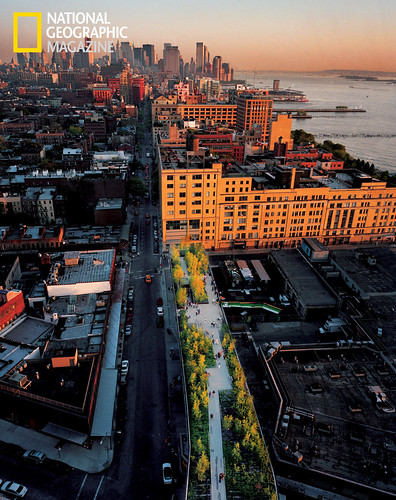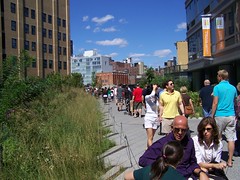National Geographic Magazine story on NYC's High Line

The High Line once stretched farther into lower Manhattan, often passing right through factories. That southernmost section was torn down in the 1960s, long before any thought of turning the line into a park. Photo by Diane Cook and Len Jenshel/National Geographic. Photo from the April 2011 issue of National Geographic magazine, on newsstands now.
From the story:
Parks in large cities are usually thought of as refuges, as islands of green amid seas of concrete and steel. When you approach the High Line in the Chelsea neighborhood on the lower west side of Manhattan, what you see first is the kind of thing urban parks were created to get away from—a harsh, heavy, black steel structure supporting an elevated rail line that once brought freight cars right into factories and warehouses and that looks, at least from a distance, more like an abandoned relic than an urban oasis.
Until recently the High Line was, in fact, an urban relic, and a crumbling one at that. Many of its neighbors, as well as New York's mayor for much of the 1990s, Rudolph Giuliani, couldn't wait to tear it down. His administration, aware that Chelsea was gentrifying into a neighborhood of galleries, restaurants, and loft living, felt the surviving portion of the High Line, which winds its way roughly a mile and a half from Gansevoort Street to 34th Street (a section farther south was torn down years ago), was an ugly deadweight. They were certain this remnant of a different kind of city had to be removed for the neighborhood to realize its full potential.
Never have public officials been so wrong. Almost a decade after the Giuliani administration tried to tear the High Line down, it has been turned into one of the most innovative and inviting public spaces in New York City and perhaps the entire country.

Credit: National Geographic Magazine.
Labels: change-innovation-transformation, parks and open space, urban design/placemaking




0 Comments:
Post a Comment
<< Home